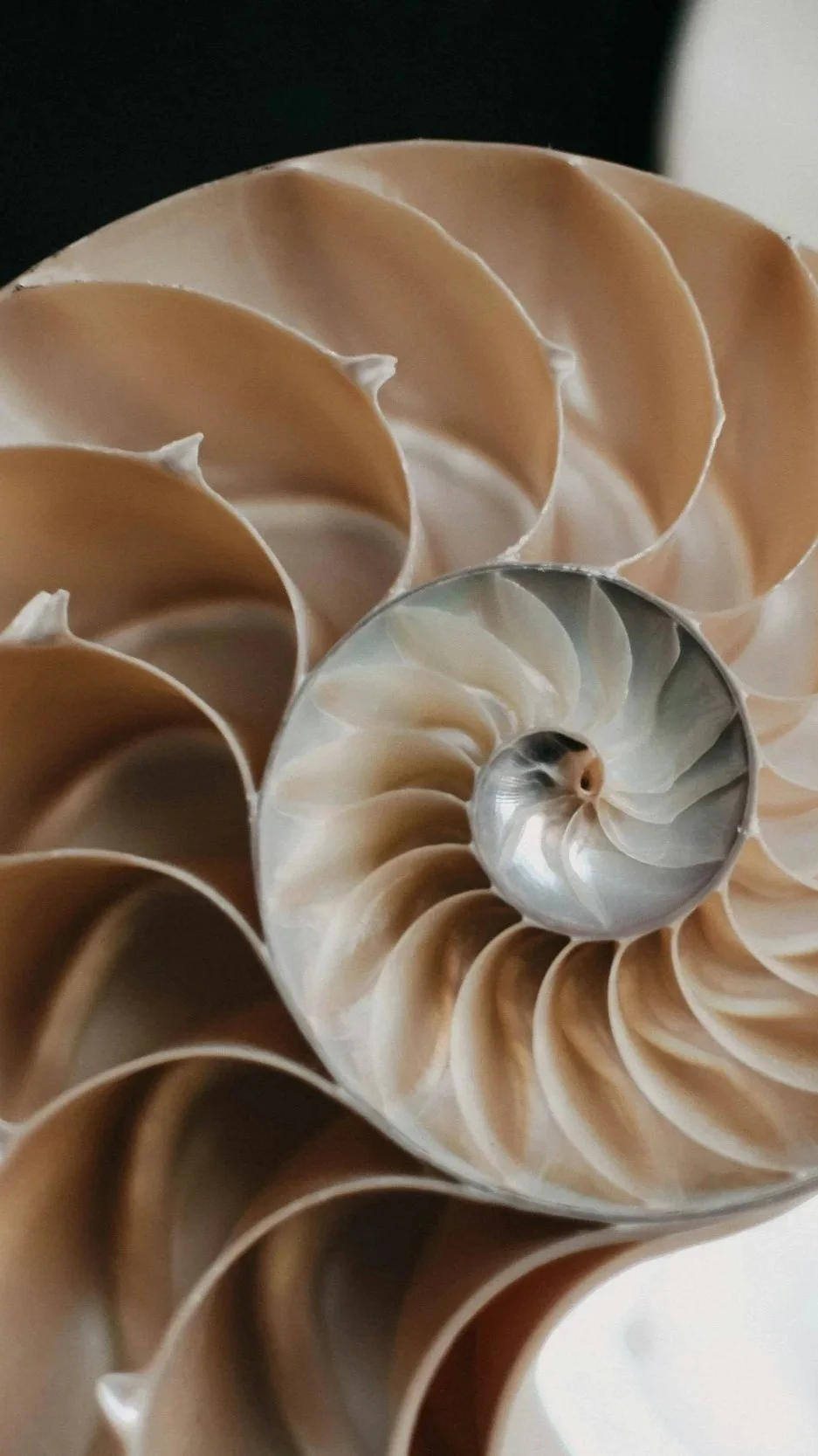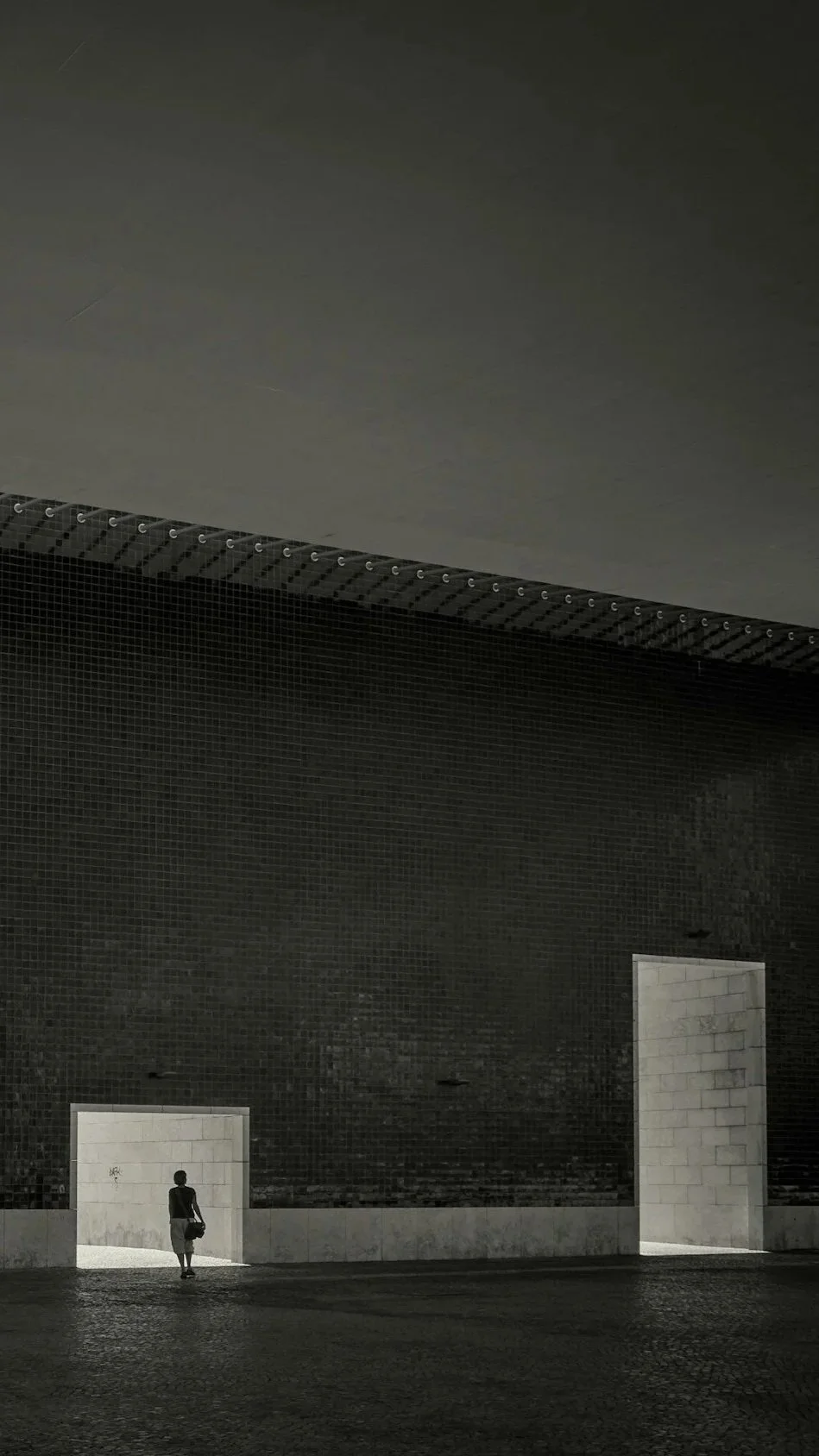5 Surprising Truths About the “Perfect Proportions” in Design
What makes a space feel effortless, so balanced and right that it almost seems inevitable? For centuries, designers and thinkers have searched for a secret formula for beauty. Many believed they found it in a single, mysterious number: the Golden Ratio.
But the real story of proportion in design is both richer and more liberating. Here are five surprising truths about what truly creates beauty and harmony in the spaces we inhabit.
1. A “Cosmic Code” Appears in Nature and the Human Body
The Golden Ratio, often represented by the Greek letter phi (Φ), has a value of approximately 1.618. Closely related to the Fibonacci Sequence, this ratio appears again and again in nature: the spiral of a seashell, the curve of a wave, even the pattern of our galaxies.
It also lives within us. Leonardo da Vinci’s Vitruvian Man famously illustrates that the distance from the floor to the navel, compared with the distance from the navel to the top of the head, reflects this proportion. Perhaps this is why our eyes find designs based on these ratios inherently pleasing—they echo patterns written into the natural world and into our own bodies.
2. Architects Have Applied It for Centuries
From the pyramids of Egypt to Renaissance masterpieces, the Golden Ratio has guided architects in creating enduring structures. Classical Georgian homes, for example, rely on these proportions in facades, windows, and door surrounds, producing balance and timeless appeal.
While the 20th century saw a departure from classical ideals, many contemporary architects are revisiting these principles—not as formulas to replicate, but as frameworks to inspire harmony.
3. The Twist: It Is Not a Rigid Rule
If the Golden Ratio is so foundational, why are not all beautiful designs precise replicas of 1:1.618? Because in practice, it functions as a guide, not a law. Much like the “rule of thirds” in photography, it is a tool that suggests balance, not a demand for mathematical precision.
Some critics even call it a myth, noting that its presence is often “discovered” only when one goes looking for it. The truth is liberating: perfection is not required. The aim is not exactness, but composition that feels right.
4. The Goal Is Harmony, Not Perfection
Proportion matters because it creates visual balance and a sense of flow. As one design group observed, “What we perceive as beautiful is to a great extent based on proportions, how various parts of a whole relate to one another.”
When used thoughtfully, proportion emphasizes focal points, clarifies spatial relationships, and evokes feelings of comfort and stability. This sense of harmony resonates deeply because we evolved within the natural world. Good design aligns with that innate rhythm.
5. You Can Achieve It Without a Calculator
The most encouraging truth? Great proportions do not require mathematical formulas. Designers often trust their eye, adjusting scale and balance intuitively. You can do the same:
Layer rugs. Place a smaller rug over a larger neutral base to expand its impact.
Work in multiples. Cluster several pendants at varying heights to create one larger, dramatic statement.
Go big with accessories. In a spacious room, oversized objects hold their presence and prevent the design from feeling sparse.
These strategies are less about numbers and more about perception—about creating rooms that feel natural, balanced, and deeply livable.
Beyond the Numbers
The Golden Ratio may be captivating, but the real secret lies beyond a single figure. Beauty emerges from thoughtful relationships—between walls and windows, light and shadow, objects and people. It is not calculated; it is composed.
When you begin to notice this harmony in your own surroundings, you will see the built world with entirely new eyes.





